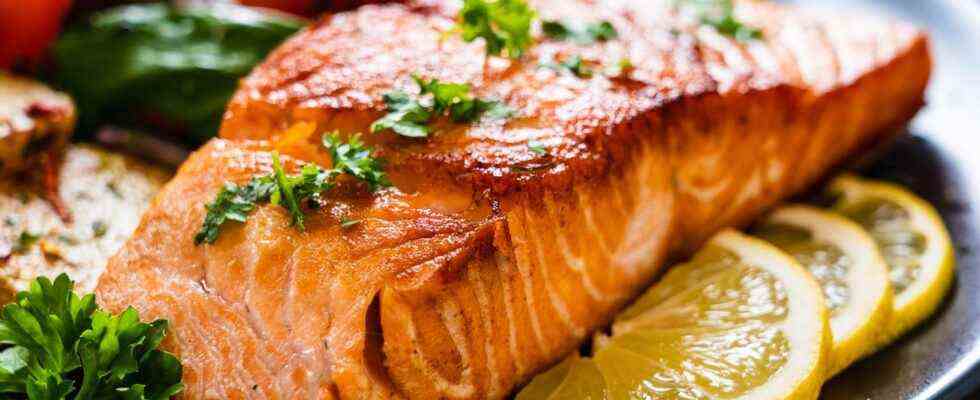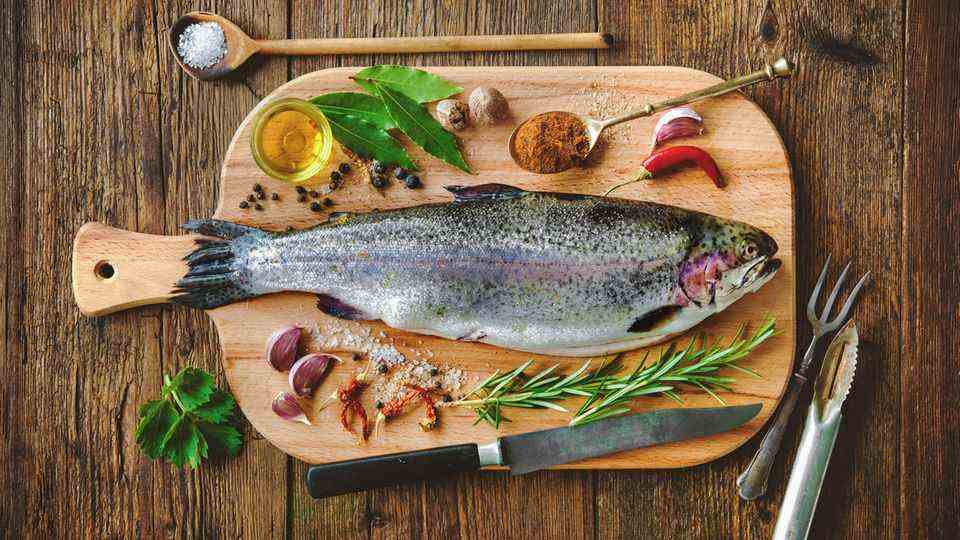Fish advice from the consumer center
Zander, herring or salmon? Which fish you can still eat with a clear conscience
Can you still eat salmon with a clear conscience?
©Getty Images
The world’s oceans are fished empty in many places. Can fish still end up on the plate? The consumer advice center provides answers on how sustainable consumption can work.
Fish is an important part of a healthy diet: it provides valuable proteins, fatty acids and minerals. But the oceans are overfished. Wild fish and seafood are becoming increasingly scarce. The answer to this is mostly fish from aquaculture. Which in turn is fed with wild-caught fishmeal.
To ensure that future generations still have fish on their menu, binding catch quotas and environmentally friendly fishing methods are needed. This would allow the diversity of species to be maintained. But which fish is actually still sustainable? The consumer advice centers in Hamburg and Berlin have updated their fish guide and are providing answers.
These fish are endangered
Endangered species include eel, sturgeon, shark, herring, Atlantic salmon, mussel, mackerel, redfish and bluefin tuna. However, one and the same fish species can be overfished in one fishing area and not in another. For example, stocks of herring from fishing zone FAO 21 USA are in good condition, while those in fishing zone FAO 21 East Newfoundland are in rather poor condition. In addition, the fishing methods have various effects on stocks and the ecosystem, so these were also included in the assessment. You can see in which table a fish can be found in the overview. Therefore, consumers should always pay attention to the origin of the catch. If in doubt: ask the seller.
In fact, fishing without any impact on the marine environment is not possible. But certain fishing methods can greatly reduce bycatch (juvenile fish, other fish species, dolphins, seabirds and turtles) and protect the seabed by not dragging the nets over them. In this way, entire ecosystems can be protected.
These fish are allowed on the table
The consumer center recommends consuming fish that has been caught sustainably, ideally with fishing lines. Good choices include Alaska Pollock, Pacific Salmon, Yellowfin Tuna and Walleye (all from specific fishing areas featured on the list). There is also nothing wrong with fish from aquaculture, provided the fish are in so-called recirculation systems and, in the best case, bear an organic seal. For example trout, salmon or pangasius. You can find the complete list in the current fish guide from the consumer advice centre, which you can view here.


